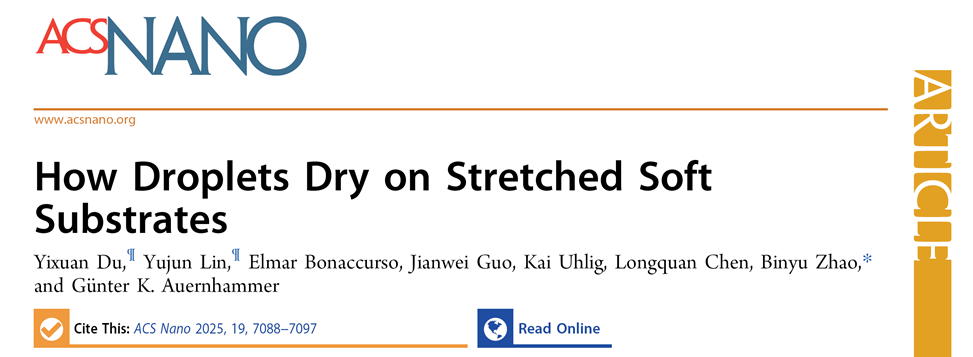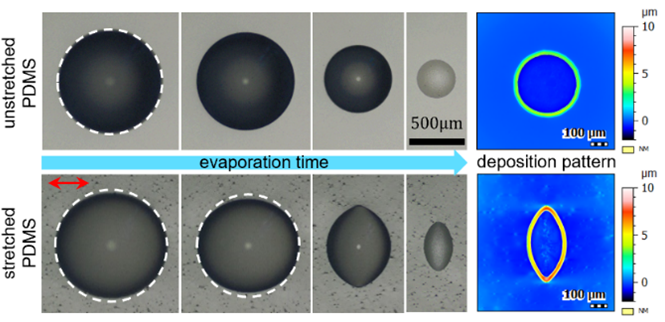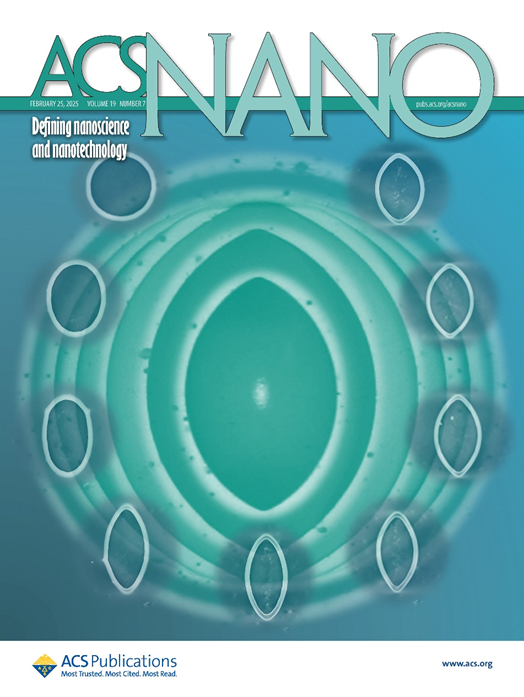
The evaporation of droplets on solid substrates is a ubiquitous and fascinating phenomenon in interfacial physics and fluid mechanics, which is closely related to numerous natural processes and industrial applications. In 1997, Robert Deegan and collaborators first explained the particle deposition phenomenon in droplet evaporation—the well-known "coffee ring" effect. Subsequently, many studies were followed for in-depth understanding and utilization of this effect but predominantly focused on rigid substrates. With the rapid development and application of soft materials, droplet dynamics on soft substrates have drawn increasing attention. Faster evaporation rates, higher condensation nucleation densities, and delayed/inhibited frost formation were reported on soft substrates compared to rigid ones. Moreover, it was found that on stretched soft substrates, droplets exhibit easier splashing upon impact and demonstrate anisotropic contact line motion during spreading or sliding. However, how substrate stretching affects droplet evaporation dynamics and particle deposition patterns remains unexplored.
Recently, researches from the Qinghai Institute of Salt Lakes, Chinese Academy of Sciences, systematically investigated the complete evaporation process of droplets on polydimethylsiloxane (PDMS) substrates with varying stiffness and stretching ratios. They uncovered the mechanism of how uniaxial stretching of soft substrates affects droplet evaporation and particle deposition. Key findings include: 1) Substrate stretching significantly alters droplet morphology and contact line dynamics during evaporation. The contact line parallel to the stretching direction retracts earlier and faster than the perpendicular direction, inducing shape transitions from spheroidal cap to spherical cap, then to spheroidal cap, and finally spindle-like morphology, accompanied by a switch of elongation directions. This phenomenon was rationalized by a direct visualization of the evolution of the surface deformation (i.e., wetting ridge) on stretched PDMS. 2) Such anisotropic contact line motion only occurs on stretched PDMS that are sufficiently soft (with an elastic modulus < ~100 kPa). Increased stretching ratio amplifies both the velocity difference and temporal gap in rapid retraction initiation between two orthogonal directions. 3) By regulating the stretching ratio and stiffness, diverse noncircular-shaped nanoparticle deposits, which are beyond the classical coffee ring effects, can be created.

Figure 1. The droplet shape changes and final deposition patterns on unstretched and stretched PDMS.
This study demonstrates that applying tensile strain to soft substrates enables effective modulation of droplet wetting dynamics and particle deposition behavior. The findings not only deepen our understanding of wetting phenomena, droplet evaporation dynamics, and particle deposition mechanisms, but also provide novel strategies for surface patterning technologies in micro/nano self-assembly, microfluidics, and electronic printing applications.
This work entitled "How Droplets Dry on Stretched Soft Substrates" was published in ACS Nano, and selected as a Supplementary Cover.
Article Link: https://pubs.acs.org/doi/10.1021/acsnano.4c15724

Figure 2. Supplementary Cover.
